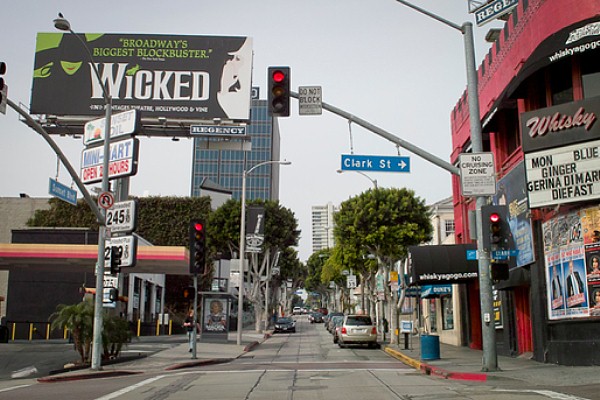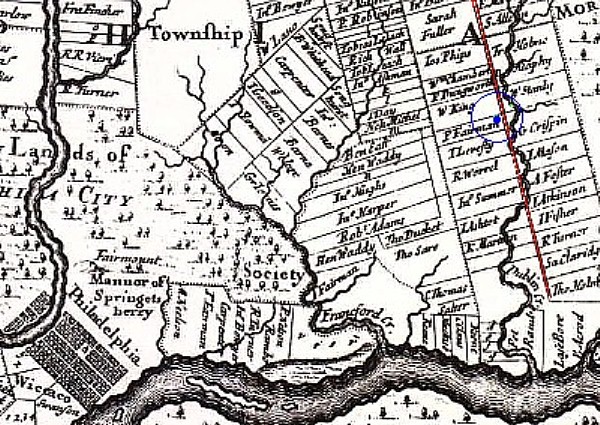2011.09.11 15:35
Future Trends in Architecture
1998.09.11:
It is indeed sad to see such a perfect example of "theory into practice" architecture relegated to the virtual existence of photographs.
Perhaps one lesson to learn here is that whenever architectural design is so closely tied to commercialism and consumerism, then its fate as something fleeting is almost guaranteed.
1999.09.11:
Young suggests:
Perhaps it will be unlike anything on earth, as B. boldly suggests, it may exist only the electromagnetic spectrum, the bandwidth beyond human comprehension as we perceive it, that is until we are reeducated from the ground up to see architecture that hovers, moves at the speed of light, appears and disappears as fast an on/off gate, is indistinguishable from humans who once "inhabited" it as other.
Lauf wonders:
Can anything other than light travel at the speed of light? Would those electric waves of radiation and those magnetic waves of radiation that compose light be light at any other speed? Doesn't being at the speed of light pretty much make everything else incidental?
2008.09.11:
Tad Hertz, Coming Apart at the Seamless: dissecting architectural superficiality, 2008.09.11.
2012.03.23 21:32
Re: Traditional Architecture
It's time for me enlarge/combine both my houses.


The program is simple: add lots more period rooms.

| |
2012.03.29 14:47
Re: Traditional Architecture
If ours is "an era of decadent, mass-produced, Orwellian mendacity about everything our culture is or aspires to be," then isn't that what our architecture should reflect?
[Quondam;
you believe that is what architecture should reflect?
other than that, i don't find that decadent need be strung along with the other words. and i don't know whether 'our culture' really aspires to be anything..no, even, perhaps 'our culture' aspires to be what it is not now and what it seems destined to be...so there is the possibility of contradiction in your question.]
2012.05.11 11:51
10 Buildings that Changed America
"When [Bishop] Athanasius sought to overcome resistance from monastic establishments, he chose a more effective strategy than accusing their most respected leaders of demonic possession. Instead he effectively co-opted the most famous of them--Anthony--by writing an admiring biography picturing Anthony as his own greatest supporter. Since Anthony had died, Athanasius had a somewhat free hand, and his biography turned Anthony into a model monk--a model, that is, of what the bishop wanted monks to be. For in his famous Life of Anthony, the sophisticated and fiercely independent teacher known from his letters disappears, and Athanasius replaces him with his own vision of an ideal monk--an illiterate and simple man. So while Anthony's letters show him to be educated in philosophy and theology, Athanasius pictures him as someone who despises educated teachers as arrogant men who are ignorant of God. And although in his letters Anthony never mentions bishops, clergy, or church rules, Athanasius pictures him instead as a humble monk who willingly subordinates himself to the clergy and "the canon of the church." Athanasius also depicts Anthony as one who hates Christian dissidents as much as he did--and who, like the bishop himself, calls them not only heretics but "forerunners of Antichrist." Far from acting as an independent spiritual mentor, Athanasius' Anthony pleads with the bishop to not allow anyone to revere him, especially after his death. As the biography ends, Athanasius pictures Anthony bequeathing all that he has--his sheepskin cloak and his outer garment--to Athanasius and the bishop's trusted ally, Bishop Serapion of Thumis, to show that Anthony regarded them as his spiritual heirs and trusted them to guard his memory."
Elaine Pagels, Revelations: Visions, Prophecy, & Politics in the Book of Revelation (2012).
Thus I'd now like to (step back) and address what might just be your real intent, that being to elevate the value of architecture within general culture. My advise to you (specifically as a writer) is to fictionalize this world where you see architectural value elevated. It could be short stories, a novel, or even a series of novels. The point being to create something that "the public" can relate to, consume, and hopefully even be inspired by--essentially putting ideas into people's mind via fiction. Also, forcing yourself to really imagine this world and how it manifests itself might just also deliver solutions to what you see as today's real problems.
Stephen Lauf, in "CONTOURS: The Divisions that Bind Us" (2012.01.19).
2012.05.16 11:08
First Images of the 2012 Serpentine Gallery Pavilion by Herzog & de Meuron and Ai Weiwei
"In the future, all the past (and even the present?) will be a fiction."
or
[I'm just not myself till I] Rita Novel.
2012.07.10 20:52
The Philadelphia School, deterritorialized
In an October 1969 ("The Big Little Magazine: Perspecta 12 and the future of the architectural past," Architectural Forum) review of Perspecta 12, Peter Eisenman writes:
"It is difficult to judge in retrospect whether Perspecta, while purporting to be a reflection of history, was not in itself creating history. And while the making of history cannot, of course, be directly ascribed to Perspecta, one can practically trace the history of post-war American architecture through its pages, from the appearance of Paul Rudolph's early Florida houses in Perspecta 1, to the Adler and DeVore houses of Louis Kahn in Perspecta 3, which in a quiet way signaled a significant, if marginal, change in the course of the Modern Movement--the eclipse of the free plan and a return to a direct modulation of space through structure."
Eisenman continues:
"There has unfortunately flourished, since the war, around the Modern Movement, a body of secondary literature which has tended not only to obscure some of the original ideas adherent to this movement, but also in some cases, in a search for an over-simplified version of history (and because of highly simplistic criteria of explanation), created an idealized picture of it--which can hardly be regarded as a representation of reality. Thus, Kenneth Frampton's article on Pierre Chareau's Maison de Verre, both in its style of presentation and its choice of material, can be seen as a break from this tradition. And while such a documentation of this building, as well as other canonical works of the Modern Movement, is long overdue as a contribution to the history of the recent past, it is the quality and scope of the documentation which commands our attention. Here is a set of precise, hard-line drawings, restrained, elegant, almost in the genre of the building itself, which certainly must establish a standard for such a presentation. But further, it is the abstract style of drawing in itself, the emphasis on plan, section, and axonometric view, which makes them useful for an analytical approach to the building. It is important to note that it was Frampton who had these drawings made in this particular manner; first because they probably did not exist, and second, because they present the building and the ideas inherent in it in a way that is not possible to retain, even when one is confronted with the actual fact."
Thirty-five years later Eisenman publishes Ten Canonical Buildings 1950-2000 (2008), where Louis I. Kahn's Adler and DeVore Houses are featured (which actually makes for a total of eleven canonical buildings within the book, but who's counting). Regarding the Adler and DeVore Houses:
"In the Adler and DeVore Houses of 1954-55, unlike in many of his other projects, Kahn achieves what could be considered an architectural text in diachronic space. This is brought about by the superposition of classical and modern space; that neither of these "times" dominates results in a dislocation of moments or, in other terms, a disjunction that is experienced in space. In the Adler and DeVore Houses, Kahn presents architecture both as a complex object and as the potential for the subject to experience the object as both a real space and an imaginary space. Both conditions are present and can be read, each in turn displacing the other. It is this unresolved moment in the Adler and DeVore Houses, which are themselves suspended in real time between the Trenton Bathhouse and the Richards Medical Center, that makes these two houses different from much of Kahn's other work. It is in the context of the denial of axial symmetries and part-to-whole relationships evident in much of Kahn's later work that these differences lie.
Thus the Adler and DeVore Houses can be seen to articulate an alternate internal logic: first, as a conscious, didactic proposal against the free plan of modern architecture, and second, as a critique of modern architecture."
To be precise, the Adler and DeVore Houses (1954-55) predate the Trenton Jewish Community Center Bathhouse (1956-57).
Eisenman continues:
"The hipped roofs of Kahn's Trenton Bathhouse, as well as its emphatic materiality, are clearly antecedents to the Adler and DeVore Houses, given that initial sketches of both houses similarly have hipped roofs. The Trenton Bathhouse is the first example in America of a massive brick and concrete structure denying the free plan and dynamic asymmetries of modernism with a classicizing nine-square plan. While only a small portion of the Trenton Bathhouse was built..."
Again, it is in fact the early hipped roofs schemes of the Adler and DeVore Houses that are antecedents to the Trenton Bathhouse, and, as built, the Trenton Bathhouse is complete. Eisenman confuses the Trenton Jewish Community Center Bathhouse with the much larger Trenton Jewish Community Center Community Building which was a wholly separate building design never executed.
When seen in (correct) chronological order and at the same scale, a number of Kahn designs, centering on the Adler and DeVore Houses, reveal a more interesting evolutionary development of the "eclipse of the free plan and a return to a direct modulation of space through structure."
| |
2012.07.30 12:22
Is there a good reason for using curves?
A few questions:
How exactly are we so sure that curves mimic nature's process?
What exactly is the good reason for architectural design to mimic nature's (so-called) process via the use of curves?
What exactly makes an architectural design that mimics nature's (so-called) process via the use of curves ethical?
Does the use of curves in architectural design somehow reduce or prevent (all) architecture's (inevitable) entropy?
Or will we find out that the use of curves in architectural design will speed-up said architecture's entropy?

2012.08.01 10:53
Narrow Streets Los Angeles
I wouldn't call Yoon's project an exercise in fiction, rather an exercise in virtuality. Unfortunately, "Narrow Streets Los Angeles" follows the all-too-common notion of blurring the real and the virtual. After finally looking at the selection of narrowed streets, I understand what Eric means by "make it all seem cute"--there is indeed a distinct Los Angeles urbanity lost when the streets are no longer the width of almost rivers. The intersection of Cottman and Bustleton Avenues in Northeast Philadelphia actually reminds me a lot of LA (pictured on page 780 of The Harvard Design School Guide to Shopping), and, while surrounded by a plethora of narrow domestic streets, the busy intersection has a quite comfortable large scale fitting to its current nodal function.
Incidentally, Bustleton Avenue has its origin as an 'ancient' Indian trail, while Cottman Avenue started as a straight property line on the 1687 map of Pennsylvania.

Cottman Avenue is the line parallel and left of the red line above. The blue dot is where I'm sitting right now, and the meander either side of the red line is Pennypack Creek.
Regarding exercises in virtuality, I prefer it when the virtual is held more distinct from the real. For example, taking LA streets and mixing one side of a street with the side of another street, and either playing with the width or not, seems more interesting.
2012.08.14 15:22
The Philadelphia School, deterritorialized

“Trust me guys, in the future everybody will be watching a television show where everyone looks and acts just like us, and it will be called Mad Men.”
|